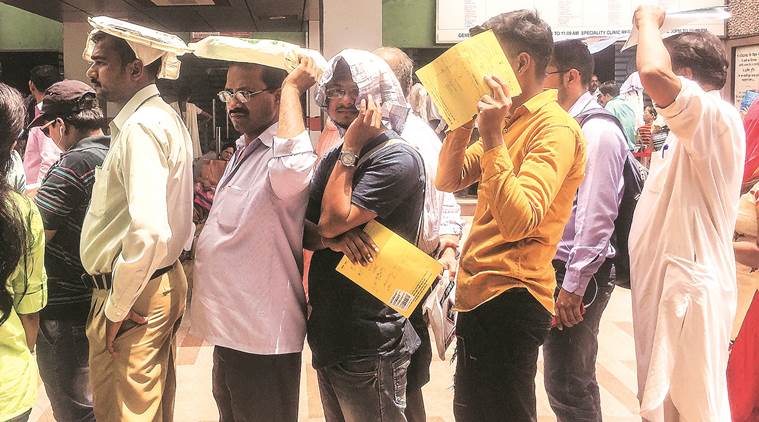 Waiting in the AIIMS line, Monday. Abhinav Saha
Waiting in the AIIMS line, Monday. Abhinav Saha
A new method, developed by the All India Institute of Medical Sciences (AIIMS) for groin dissection — key for surgeries pertaining to cancers below the waist, including melanoma, anal cancer and gynaecological cancer — has significantly reduced morbidity rates as well as recovery time for patients from nearly two months to just three-four days.
Known as the ‘river know incisional technique’, it looks to minimise post-operative complications, the probability of which could be as high as 66%, by a simple change in the method: a modified “skin bridge technique” that uses “curvilinear incisions”. The method was initially accepted in the World Journal of Methodology in 2016 and after successful utilisation in 105 cases, the results were published in the World Journal of Surgery in April.
Dr M D Ray, who developed the technique, said, “This was a problem that flummoxed doctors across the world. On one hand, this was essential in treating any cancer below the umbilical region. But the risks were high. Across the world, people weren’t finding an alternative. In half the cases, the operations wouldn’t be successful, the infection wouldn’t be controlled and patient would need another month-and-a-half for recovery.”
For the last year, Ray said he had used the technique in 105 dissections, in 75 patients, without a single case of necrosis or failure. The study, published in April, notes that the four major complications with groin dissections include skin edge necrosis (death of skin tissue), infection, seroma (build up of fluid below the skin surface) and lymphedema (blockage of lymphatic vessels). It adds, “This simple technique can easily be learned by young surgeons and practised even at centres with limited infrastructure.”
Ray added that particularly devastating would be the skin edge or flap necrosis, which would lead to damage of skin and muscle over the operated area, wherein patients would be required to stay in the hospital for a long time. “In most cases, this would imply that a second surgery would be required. But by avoiding the risk of necrosis completely, the early recovery of the patient is not only safer but also greatly reduces the period of hospitalisation.”
For a hospital like AIIMS, which sees thousands of patients every day, Ray said that the new technique was instrumental in saving lives. “Not only does this mean the patient spends less time in the hospital, but that beds, which are in constant demand, are freed up, allowing more patients to avail medical facilities. The implications of this are global.”
Although there are different ways to perform the surgery, no procedure has been standardised for the operation and, as per global medical literature, the complication rate of this procedure is 65%.